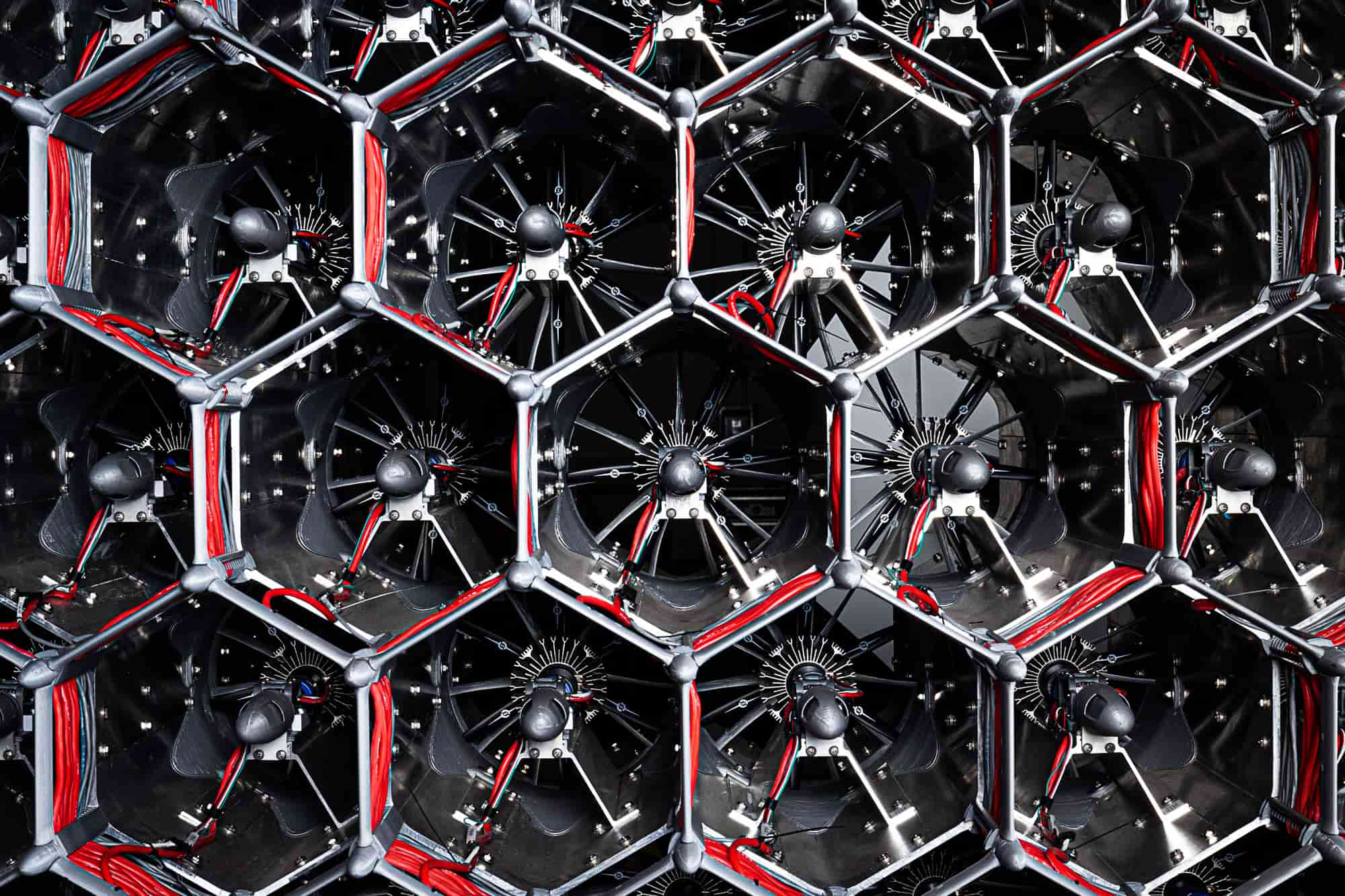The University of Florida's Powell Family Structure and Materials Laboratory has designed new, innovative technology that will assist in gathering moretimely, efficient hurricane research. Located at UF's East Campus, the wind hazard facility experimentally evaluates the way extreme winds interact with man-made infrastructure.
Currently, the laboratory uses eight large fans to push wind, which isn’t a good replica of what happens in the natural world. The way wind behaves is fundamentally different. The new multi-fan flow field modulator’s 319 individually controlled fans will be capable of replicating extreme wind phenomena beyond the eight-fan array. While some parts for the new modulator were supplied by outsourced vendors, the bulk of the technology was created in-house at the Powell Laboratory using 3D printers and the machine shop.
Either fan bank pushes the wind over 1,100 individually controlled roughness elements that represent the terrain upwind of the test subject. The elements, collectively referred to as the terraformer, can change orientation and height to provide fine control over the turbulence close to the floor where the test subject is placed.

The front of the Powell Laboratory's new multi-fan flow field modulator (right). The rapidly reconfigurable 'terraformer' to replicate terrain and control wind behavior at the test section (left).
“What’s unique is every one of these elements is individually controlled and automated, so we can drastically change the behavior of the wind by pushing a button and waiting for 30 seconds,” said Kurtis Gurley, associate director of UF’s Engineering School of Sustainable Infrastructure and Environment and expert faculty from UF’s Department of Civil and Coastal Engineering. “All of [these blocks] can change to a different configuration, as do the fans.”
Despite its widespread use, the basic design of the boundary layer wind tunnel has not changed for nearly 40 years, leaving an inability to readily recreate scenarios such as downbursts associated with thunderstorms and other extreme weather conditions. Other laboratories around the world have some automation of the roughness elements, but UF has the only lab with this level of detail and flexibility, allowing researchers to recreate such scenarios.
“In a traditional wind tunnel, the blocks would be wooden blocks that researchers glue or nail down to the floor and if they wanted to change the behavior, they would have to pull them all up and put in new blocks,” Gurley said. “Our automated system gains a lot of efficiency — we can go through a much broader spectrum of experiments and change the type of flow conditions much more rapidly.”

The back of the Powell Laboratory's new multi-fan flow field modulator.
The laboratory is a national hub for experimental research making homes and businesses safer in hurricanes and tornadoes. The lab is among seven labs in the nation with the designation of “Experimental Facilities” under the Natural Hazards Engineering Research Infrastructure program, sponsored by the National Science Foundation, and is one of the two dedicated to studying extreme wind events. UF’s laboratory is entering its fourth year in the program.
The facilities will attract NSF-funded researchers from throughout the nation who are working on wind engineering projects and are part of a network of scientists who study different aspects of natural hazards. It provides undergraduate students, graduate students and faculty members access to one of the largest and most diverse suites of wind engineering experimental research infrastructure in the world. For more information, visit: https://ufl.designsafe-ci.org/